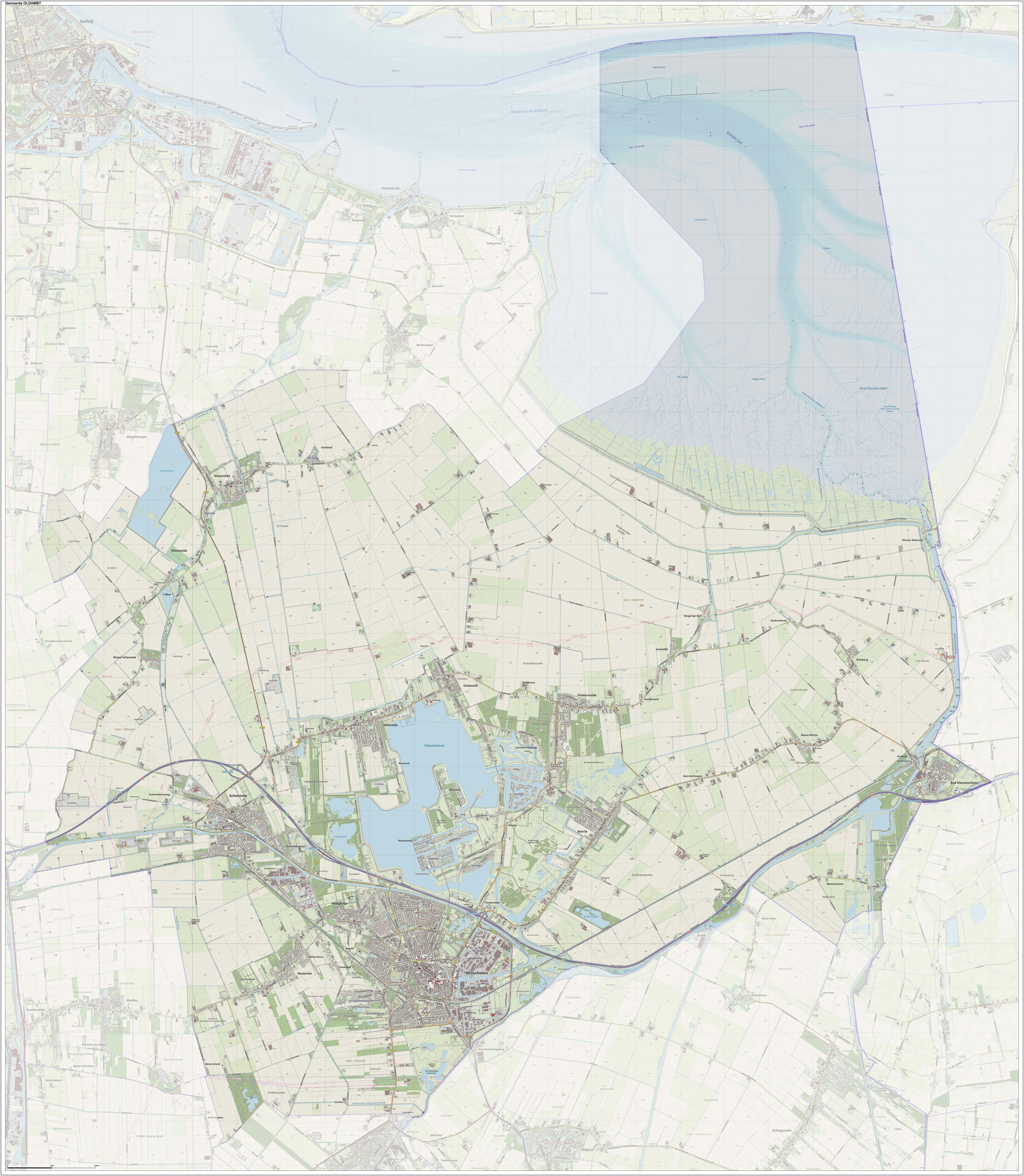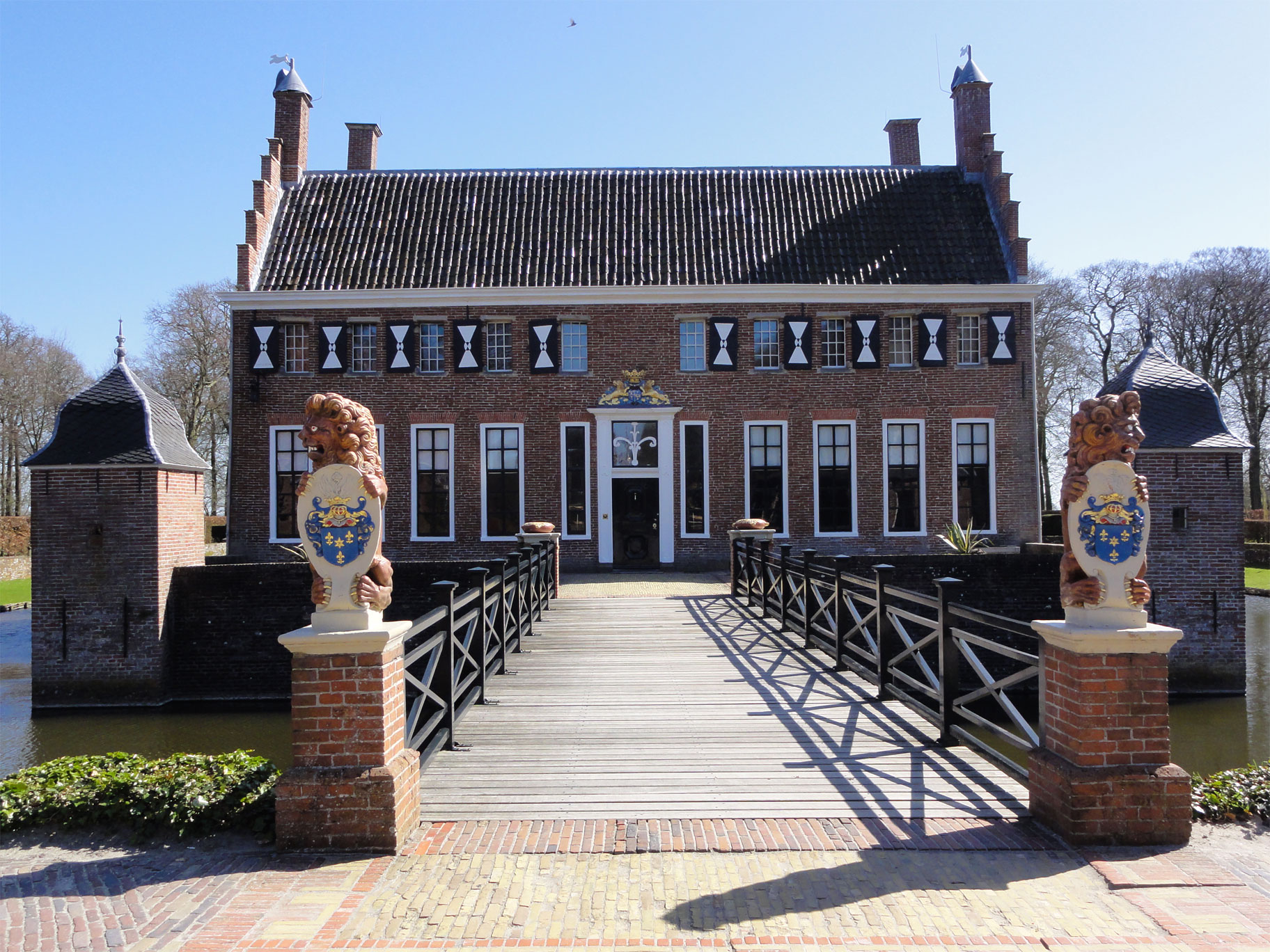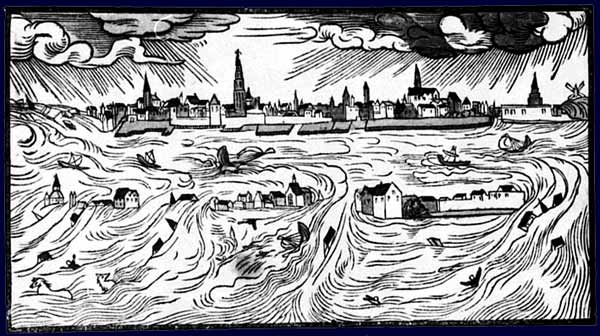|
Midwolda
Midwolda () is a village in the Dutch province of Groningen. It is located in the municipality of Oldambt, about 7 km northwest of Winschoten. Midwolda was a separate municipality until 1990, when it was merged with Scheemda. History The village was first mentioned in 1282 as de Middewalda, and means middle woods. Midwolda is a road village which developed in the Middle Ages at the edge of the former peninsula of Winschoten. The All Saints' Flood of 1570 caused an extension of the Dollart, and the village moved to the south near the dike constructed in 1565. The old church remained behind, however the tower collapsed in 1667, and the church was demolished in 1738. The current Dutch Reformed church was built between 1738 and 1740, and has a tower from 1708. The ''borg'' Ennemaborg might date from before 1391. It is surrounded by a moat and received its current shape in 1681. Midwolda was home to 1,674 people in 1840. It was independent municipality until 1990 when it wa ... [...More Info...] [...Related Items...] OR: [Wikipedia] [Google] [Baidu] |
Oldambt (municipality)
Oldambt () is a municipality with a population of in the province of Groningen in the Netherlands. It was established in 2010 by merging the municipalities of Reiderland, Scheemda, and Winschoten. It contains the city of Winschoten and these villages: History The name "Oldambt" from "Ol dambt" meaning "the old fill" is derived from land reclamation efforts, starting after the catastrophic floodings of the 13th century. The municipality of Oldambt was established 1 January 2010, as a merger of the former municipalities of Reiderland, Scheemda and Winschoten. Geography Oldambt is located at in the northeast of the province of Groningen in the northeast of the Netherlands on the border with Germany. Near Bad Nieuweschans is the easternmost point of the Netherlands. The municipality falls within the region of Oldambt and the western part falls within the region of Rheiderland. The municipality is bordered by the Dutch municipalities of Delfzijl (in the north), Slocht ... [...More Info...] [...Related Items...] OR: [Wikipedia] [Google] [Baidu] |
Scheemda
Scheemda () is a village with a population of 2,445 in the municipality of Oldambt in the province of Groningen in the Netherlands. Scheemda was a separate municipality until 2010, when it merged with Reiderland and Winschoten to form the municipality of Oldambt. History Until 2010, Scheemda was a separate municipality with the population centers Heiligerlee, Midwolda, Nieuw-Scheemda, Nieuwolda, Oostwold, Scheemda, 't Waar and Westerlee. On 1 January 2010, the municipality merged into Oldambt. Transportation The Scheemda railway station was opened in 1868 and has train services to Zuidbroek and Groningen in the west, and Winschoten, Bad Nieuweschans Bad Nieuweschans (also ''Lange Akkeren''; ; Gronings: ''Nij-Schans''; German: ''Bad Neuschanz'') is a village in the north-eastern Netherlands on the border with Germany. It forms part of the municipality of Oldambt. Nieuweschans means "new for ..., and Leer (Germany) in the east. Notable people * Pieter Smit ... [...More Info...] [...Related Items...] OR: [Wikipedia] [Google] [Baidu] |
Borg (castle)
A borg (; Gronings: ''börg'') is a former stronghold or villa in the province of Groningen, Netherlands. Borgs used to belong to noblemen or prominent citizens. A comparable building in the neighboring province of Friesland is called a stins. History A borg usually started as a brick building, a 'steenhuis' (literally meaning 'stone house'), built in the 13th or 14th century. A steenhuis was usually 11 meters long and eight meters wide. The walls were thick, often more than one meter in thickness. Most were originally made of wood because stone was expensive, but less flammable. A steenhuis was not used as a house, but offered protection in times of danger. There is one original steenhuis left in Groningen, the Iwema-steenhuis in Niebert. Some steenhuises were enlarged and became more like a castle; this would be considered a borg. A good example of a borg that originated from a steenhuis is the Fraeylemaborg. In the building itself you can still find a wide wall with emb ... [...More Info...] [...Related Items...] OR: [Wikipedia] [Google] [Baidu] |
Village
A village is a clustered human settlement or community, larger than a hamlet but smaller than a town (although the word is often used to describe both hamlets and smaller towns), with a population typically ranging from a few hundred to a few thousand. Though villages are often located in rural areas, the term urban village is also applied to certain urban neighborhoods. Villages are normally permanent, with fixed dwellings; however, transient villages can occur. Further, the dwellings of a village are fairly close to one another, not scattered broadly over the landscape, as a dispersed settlement. In the past, villages were a usual form of community for societies that practice subsistence agriculture, and also for some non-agricultural societies. In Great Britain, a hamlet earned the right to be called a village when it built a church. [...More Info...] [...Related Items...] OR: [Wikipedia] [Google] [Baidu] |
Netherlands
) , anthem = ( en, "William of Nassau") , image_map = , map_caption = , subdivision_type = Sovereign state , subdivision_name = Kingdom of the Netherlands , established_title = Before independence , established_date = Spanish Netherlands , established_title2 = Act of Abjuration , established_date2 = 26 July 1581 , established_title3 = Peace of Münster , established_date3 = 30 January 1648 , established_title4 = Kingdom established , established_date4 = 16 March 1815 , established_title5 = Liberation Day (Netherlands), Liberation Day , established_date5 = 5 May 1945 , established_title6 = Charter for the Kingdom of the Netherlands, Kingdom Charter , established_date6 = 15 December 1954 , established_title7 = Dissolution of the Netherlands Antilles, Caribbean reorganisation , established_date7 = 10 October 2010 , official_languages = Dutch language, Dutch , languages_type = Regional languages , languages_sub = yes , languages = , languages2_type = Reco ... [...More Info...] [...Related Items...] OR: [Wikipedia] [Google] [Baidu] |
Groningen (province)
Groningen (; gos, Grunn; fry, Grinslân) is the northeasternmost province of the Netherlands. It borders on Friesland to the west, Drenthe to the south, the German state of Lower Saxony to the east, and the Wadden Sea to the north. As of February 2020, Groningen had a population of 586,309 and a total area of . Historically the area was at different times part of Frisia, the Frankish Empire, the Holy Roman Empire, and the Dutch Republic, the precursor state of the modern Netherlands. In the 14th century, the city of Groningen became a member of the Hanseatic League. The provincial capital and the largest city in the province is the city of Groningen (231,299 inhabitants). Since 2016, René Paas has been the King's Commissioner in the province. A coalition of GroenLinks, the Labour Party, ChristianUnion, People's Party for Freedom and Democracy, Democrats 66, and Christian Democratic Appeal forms the executive branch. The province is divided into 10 municipalities. T ... [...More Info...] [...Related Items...] OR: [Wikipedia] [Google] [Baidu] |
Central European Time
Central European Time (CET) is a standard time which is 1 hour ahead of Coordinated Universal Time (UTC). The time offset from UTC can be written as UTC+01:00. It is used in most parts of Europe and in a few North African countries. CET is also known as Middle European Time (MET, German: MEZ) and by colloquial names such as Amsterdam Time, Berlin Time, Brussels Time, Madrid Time, Paris Time, Rome Time, Warsaw Time or even Romance Standard Time (RST). The 15th meridian east is the central axis for UTC+01:00 in the world system of time zones. As of 2011, all member states of the European Union observe summer time (daylight saving time), from the last Sunday in March to the last Sunday in October. States within the CET area switch to Central European Summer Time (CEST, UTC+02:00) for the summer. In Africa, UTC+01:00 is called West Africa Time (WAT), where it is used by several countries, year round. Algeria, Morocco, and Tunisia also refer to it as ''Central European ... [...More Info...] [...Related Items...] OR: [Wikipedia] [Google] [Baidu] |
Central European Summer Time
Central European Summer Time (CEST), sometimes referred to as Central European Daylight Time (CEDT), is the standard clock time observed during the period of summer daylight-saving in those European countries which observe Central European Time (CET; UTC+01:00) during the other part of the year. It corresponds to UTC+02:00, which makes it the same as Eastern European Time, Central Africa Time, South African Standard Time, Egypt Standard Time and Kaliningrad Time in Russia. Names Other names which have been applied to Central European Summer Time are Middle European Summer Time (MEST), Central European Daylight Saving Time (CEDT), and Bravo Time (after the second letter of the NATO phonetic alphabet). Period of observation Since 1996, European Summer Time has been observed between 01:00 UTC (02:00 CET and 03:00 CEST) on the last Sunday of March, and 01:00 UTC on the last Sunday of October; previously the rules were not uniform across the European Union. There were proposals ... [...More Info...] [...Related Items...] OR: [Wikipedia] [Google] [Baidu] |
List Of Postal Codes In The Netherlands
Postal codes in the Netherlands, known as ''postcodes'', are alphanumeric, consisting of four digits followed by two uppercase letters. The letters 'F', 'I', 'O', 'Q', 'U' and 'Y' were originally not used for technical reasons, but almost all existing combinations are now used as these letters were allowed for new locations starting 2005. The letter combinations ' SS', ' SD' and ' SA' are not used because of their associations with the Nazi occupation of the Netherlands. The first two digits indicate a city and a region, the second two digits and the two letters indicate a range of house numbers, usually on the same street. Consequently, a postal address is uniquely defined by the postal code and the house number. On average, a Dutch postal code comprises eight single addresses. There are over 575,000 postal codes in the Netherlands . Stadsregio Amsterdam Postbus 626 1000 AP Amsterdam Caribbean Netherlands The three BES-islands, which became part of the country in 2010, do ... [...More Info...] [...Related Items...] OR: [Wikipedia] [Google] [Baidu] |
Telephone Numbers In The Netherlands
Telephone numbers in the Netherlands are administered by the Ministry of Economic Affairs, Agriculture and Innovation of the Netherlands and may be grouped into three general categories: geographical numbers, non-geographical numbers, and numbers for public services. Geographical telephone numbers are sequences of 9 digits (0-9) and consist of an area code of two or three digits and a subscriber number of seven or six digits, respectively. When dialled within the country, the number must be prefixed with the trunk access code 0, identifying a destination telephone line in the Dutch telephone network. Non-geographical numbers have no fixed length, but also required the dialling of the trunk access code (0). They are used for mobile telephone networks and other designated service types, such as toll-free dialling, Internet access, voice over IP, restricted audiences, and information resources. In addition, special service numbers exist for emergency response, directory assistance ... [...More Info...] [...Related Items...] OR: [Wikipedia] [Google] [Baidu] |
Winschoten
Winschoten (; gos, Winschoot) is a city with a population of 18,518 in the municipality of Oldambt in the northeast of the Netherlands. It is the largest city in the region of Oldambt in the province of Groningen which has 38,213 inhabitants. Winschoten received its city rights in 1825. It was a separate municipality until it was merged into Oldambt in 2010. The seat of government of Oldambt is in Winschoten. There are three windmills and several churches in Winschoten. There is a railway station with direct connections to Groningen and Leer (Germany). Winschoten has an important role as a shopping centre for the region of Oldambt. In the province of Groningen, it is the second-largest shopping destination and it attracts many consumers from nearby Germany. Etymology The origin of the name of Winschoten is not known but it has received nicknames. One of these is ''Molenstad'' (or ''Milltown''). It has also been known, in living memory, as Sodom. This name arose out ... [...More Info...] [...Related Items...] OR: [Wikipedia] [Google] [Baidu] |
All Saints' Flood (1570)
The All Saints' Flood of 1570 occurred on November 1–2, 1570, and is considered the worst North Sea flood disaster before the 20th century. It flooded the entire coast of the Netherlands and East Frisia. The effects were felt from Calais in Flanders to Jutland and even Norway. Even though the alleged casualty figures were mostly based on rough estimates and should be viewed with skepticism, up to 25,000 deaths can be assumed. Course of events The morning before the storm surge, a warning of a very strong flood had been issued for the first time in history. In Bergen op Zoom, the Domain Council, the local administration, had issued the warning, but it had not had the intended effect, as most victims were not reached by the warning and were caught unprepared by the flood. With a level of more than four meters above the mean high water, the flood was well above the height of the dikes existing at the time, which were also severely neglected. In numerous places, the dikes were ove ... [...More Info...] [...Related Items...] OR: [Wikipedia] [Google] [Baidu] |




.jpg)
